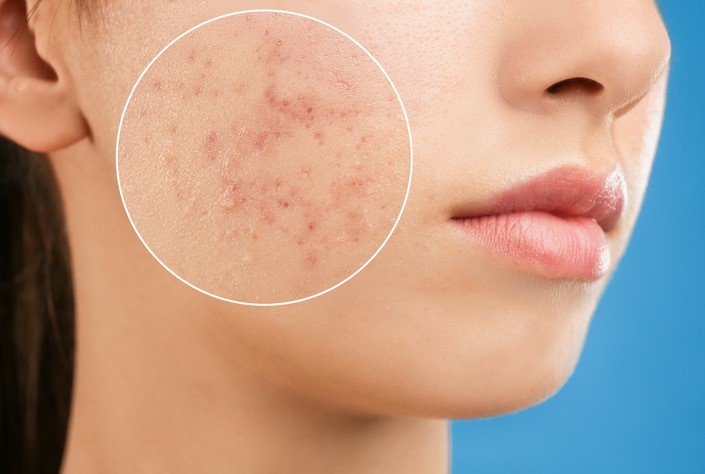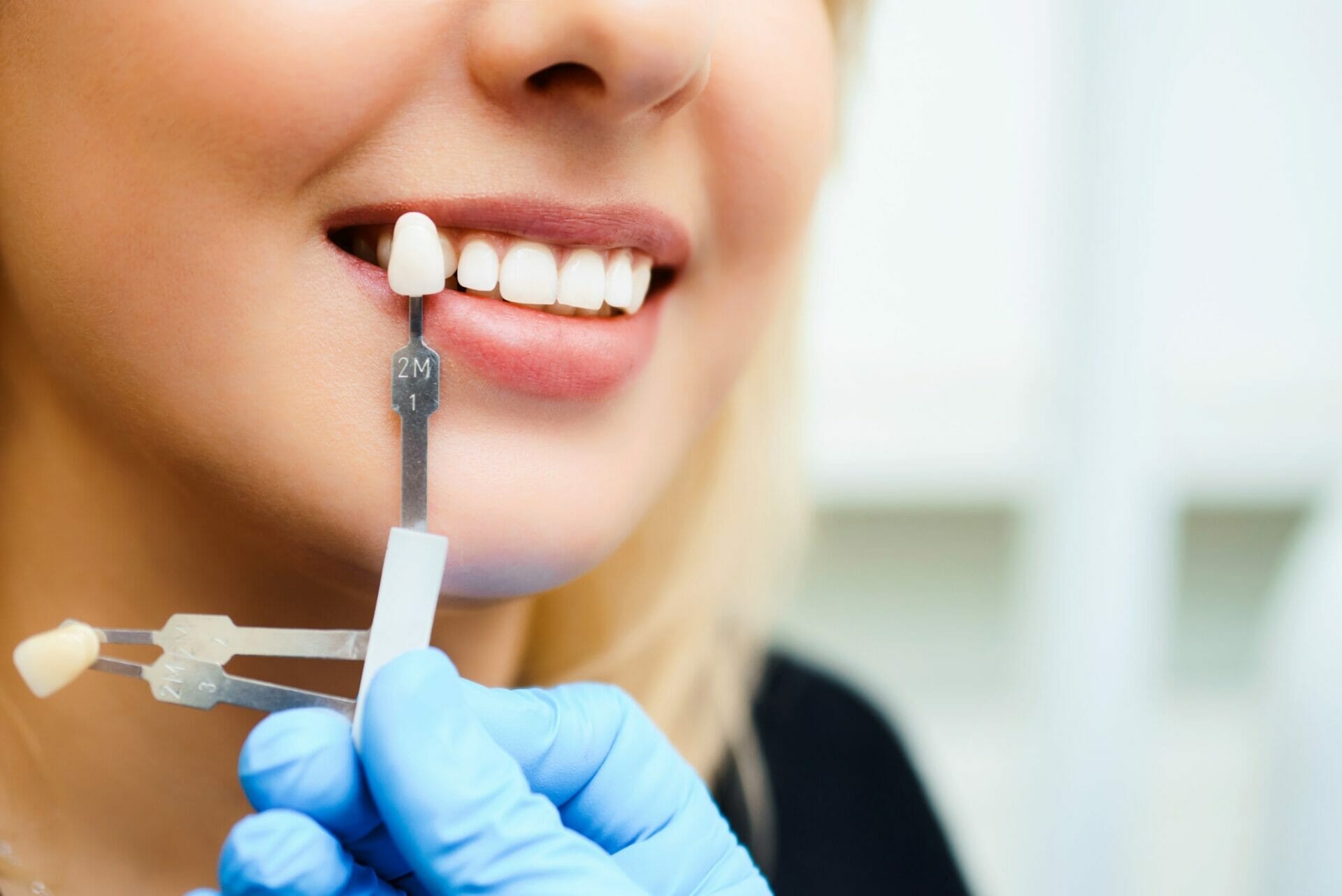
Preventing and Treating Gum Loss
 Posted On
Posted On
Gum loss, also known as gum recession, is a condition in which the gum tissue surrounding the teeth pulls back or wears away, exposing more of the tooth or even the tooth’s root. This process can occur gradually over many years and might initially go unnoticed, but as the condition worsens, it can lead to sensitivity, pain, and eventual tooth loss if left untreated. For Londoners seeking to maintain healthy smiles, understanding gum loss is a crucial part of an effective oral care routine. While many discussions about dental work focus on aesthetics—such as the ever-popular veneer treatments, braces, there is an equally important aspect of oral health that should never be overlooked: the long-term health of your gums.
On the first page of this exploration, it is valuable to hear from an expert who has seen countless cases of gum recession in a cosmopolitan setting where modern cosmetic procedures are highly sought after. Leading London cosmetic dentist Dr. Sahil Patel emphasises, “While aesthetic improvements in dentistry continue to evolve, patients should remember that a healthy foundation of gums is the bedrock of any cosmetic dental treatment. Addressing gum recession at its earliest stages can prevent more complex interventions later on. Prioritising gum health isn’t merely about preserving the appearance of your smile; it’s about safeguarding the structures that keep your teeth stable for life”, says the Marylebone Smile Clinic based doctor.
This professional perspective highlights the need for a more nuanced discussion on the complex interplay between gum health, general dental care, and cosmetic treatments. Many individuals in London, and indeed across the UK, want the confidence of a bright, aesthetically pleasing smile. Yet it is equally essential to develop a deeper understanding of how we can prevent and treat gum loss in order to maintain oral wellness long after treatments are completed. Below is a comprehensive guide to help you recognise the signs of gum recession, understand the treatments available, and act proactively in preventing gum loss.
Table of Contents
Understanding Gum Loss: A Thorough Explanation
Gum recession is a gradual process. In healthy mouths, the gum tissue fits snugly around the teeth, creating a protective seal. Over time, factors such as gum disease, aggressive brushing, and misaligned bites can erode or wear down the gum tissue. When the gums recede, tiny gaps known as “pockets” form between the gum line and the teeth. These pockets can become traps for harmful bacteria, leading to inflammation, decay, and further gum erosion.
In the early stages, many people may not experience pain or obvious symptoms, which is why gum recession sometimes progresses unnoticed. By the time one observes increased tooth sensitivity or the appearance of the tooth looking longer, the recession may have advanced considerably. While gum loss is often associated with older adults, it can also affect younger individuals if certain risk factors are present.
In London, where fast-paced lifestyles can contribute to inconsistent oral care routines, gum recession has become an area of growing concern. Sedentary lifestyles, higher stress levels, and less frequent dental check-ups may compound the issue. Fortunately, by staying informed and seeking regular dental advice, gum loss can be prevented or halted in its tracks.
The Importance of Healthy Gums
Gums are not just a peripheral part of the mouth; they form the foundation that supports teeth. Healthy gums fit tightly around each tooth, shielding the roots from harmful bacteria and external debris. When the gum line recedes, the structural stability of the tooth is compromised, and the tooth becomes more vulnerable to infection or damage. If recession progresses without intervention, bone loss can occur, culminating in the loosening or even loss of teeth.
Furthermore, gum health is intrinsically linked to overall health. Numerous studies have shown correlations between gum disease and systemic conditions like heart disease, diabetes, and even certain respiratory illnesses. This link underscores the necessity of preventing and treating gum loss early, ensuring not only an attractive smile but also supporting overall well-being.
Common Causes of Gum Recession
Gum recession usually has multiple contributing factors. One of the most frequent causes is periodontal disease, or gum disease, which is primarily caused by the accumulation of plaque along the gum line. Plaque houses bacteria that, if not removed, irritate the gums and provoke inflammation.
Aggressive brushing is another major cause. While it’s important to maintain good oral hygiene practices, brushing with excessive force or using a hard-bristled toothbrush can do more harm than good by gradually wearing away the protective gum tissue.
Hormonal changes, especially in women, can also influence gum health. During pregnancy, menopause, or times of intense hormonal fluctuation, the gums may become more sensitive, thereby increasing the likelihood of recession.
Other causes include clenching or grinding of the teeth (bruxism), misaligned bites, and even certain types of orthodontic treatment. In some cases, genetics plays a role—if your parents have a history of gum recession or gum disease, you may be predisposed to similar problems.
Risk Factors for Gum Loss
Although gum recession can happen to anyone, there are certain factors that can greatly increase the risk:
- Elevated stress levels and poor oral hygiene routines
- Hormonal changes that make gums more susceptible to inflammation
- Use of tobacco products
- Chronic conditions like diabetes
- Genetic predisposition to periodontal disease
In metropolitan areas like London, lifestyle and stress can be significant components. Skipping routine dental check-ups or not investing enough time in daily oral care can exacerbate these risk factors. People with particularly stressful jobs may find themselves clenching their jaws or grinding their teeth at night, leading to extra pressure on the gums. Recognising and managing these factors forms an integral part of preventing gum loss and improving overall oral health.
Early Signs and Symptoms
Gum recession often goes unnoticed at first. Many individuals initially ignore subtle changes, attributing occasional tooth sensitivity to weather changes or blaming mild gum inflammation on the type of toothpaste they use. However, early detection can prevent more serious complications down the line.
One of the earliest signs is persistent sensitivity to hot and cold temperatures. This heightened sensitivity occurs because more of the tooth root is exposed to external stimuli. The root is not protected by enamel and is thus vulnerable to temperature changes. Another common symptom is the appearance of longer-looking teeth, which many people don’t immediately connect with receding gums. Redness, swelling, and gums that bleed during brushing or flossing also indicate potential gum disease or imminent recession issues.
Identifying these signs and consulting a dentist promptly can prevent minor gum recession from escalating into more serious stages. Timely intervention not only protects the longevity of your teeth but can also help avoid costly, invasive procedures later.
Potential Consequences of Untreated Gum Recession
If gum recession continues without intervention, it can set the stage for further complications. The pockets that form between the gum and the tooth can accumulate bacteria, increasing the likelihood of tooth decay and infection. As these bacterial colonies grow, they break down both the gum tissue and the supporting bone structure beneath, resulting in periodontitis. Periodontitis is a more advanced form of gum disease and can lead to significant bone loss, tooth mobility, and ultimately tooth loss.
Beyond the physical effects, untreated gum recession can cause emotional distress. A receding gum line and the associated changes in appearance may impact one’s self-confidence. In a city like London—where an appealing smile can be seen as part of one’s personal or professional presentation—leaving gum recession unaddressed can have social implications. Furthermore, advanced gum problems can make it more difficult or uncomfortable to undergo certain cosmetic procedures. Having receding gums might limit the options available, as cosmetic dentists often require a stable gum line before performing transformative treatments.
Preventative Measures and Oral Hygiene
A good daily mouth care practice is the first step in stopping gum recession. To get rid of plaque and protect tooth surfaces, brush your teeth at least twice a day with a soft-bristled toothbrush and fluoride toothpaste. A lot of doctors in London say that an electric toothbrush is the best way to clean your teeth, but you should be careful not to press too hard.
Flossing daily is equally important. By removing plaque and food debris from spaces that a toothbrush might miss, flossing reduces the accumulation of bacteria near the gum line. Some individuals find it helpful to incorporate interdental brushes or oral irrigators, which can clean between teeth and below the gum line more effectively.
Rinsing with an antibacterial mouthwash can also reduce the bacterial load in the mouth. However, it is important to choose a product free from harsh chemicals that might irritate sensitive gums. Routine dental check-ups and professional cleanings are vital to diagnosing and mitigating early signs of gum recession. A dentist can detect subtle changes in gum health, recommend targeted treatments, and remove tartar that everyday brushing cannot eliminate.
Advanced Preventative Strategies in London
For individuals in London who have a higher risk of gum recession, there are more advanced strategies that can help maintain gum health. Dental clinics often offer personalised counselling on diet, stress management, and at-home techniques, ensuring that each patient’s unique circumstances are addressed.
A consultation with a cosmetic dentist or periodontist may also identify and correct underlying causes of gum recession such as misaligned bites or bruxism (teeth grinding). Custom-fitted night guards are commonly used to protect teeth from excessive grinding, distributing pressure more evenly and reducing strain on the gums.
Available Treatments for Gum Loss
Once gum recession has occurred, a number of treatment options can be utilised to slow, halt, or even reverse the process. The specific course of action often depends on how advanced the gum loss is and what underlying factors are contributing to it. Non-surgical methods are typically the first step, focusing on deep cleaning procedures like scaling and root planing, where dentists remove plaque and tartar from below the gum line and smooth out rough spots on the tooth root to discourage further bacterial colonisation.
If gum recession has progressed to moderate or severe stages, additional treatments might be required. One popular approach for minor to moderate recession is the use of topical antibiotics or antimicrobial mouth rinses, which help reduce inflammation and kill harmful bacteria. Another method includes applying desensitising agents or bonding materials to exposed tooth roots to reduce sensitivity.
Regenerative Procedures
When gum tissue has significantly receded, regenerative techniques can help restore what has been lost. Gum grafts are a prime example. In a gum graft, tissue is taken from another area of the mouth (often the palate) and attached to the site of recession. This helps cover the exposed root and encourages new tissue growth, returning the gum line to a healthier position. Gingival graft procedures vary in technique—such as a connective tissue graft or free gingival graft—but the primary aim is to reinstate sufficient gum coverage and protect exposed tooth roots.
In certain cases, guided tissue regeneration might be employed, especially if the supporting bone has also been compromised. A biocompatible membrane is inserted to encourage the body’s natural ability to regenerate bone and gum tissue. While these procedures might sound complex, they have become more common and refined over recent years, with London clinics offering advanced techniques that shorten recovery time and improve outcomes.
The Role of Cosmetic Dentistry in Managing Recession
Cosmetic dentistry has become increasingly popular in London, particularly among those wanting to enhance their smile’s aesthetics. While these procedures frequently focus on changing tooth shape, alignment, or shade, they can also play a role in managing or concealing gum recession. For instance, dental veneers can sometimes mask the minor effects of receding gums. Nevertheless, the preparation for veneers requires a careful examination of gum health. Applying veneers over teeth with ongoing gum issues can cause further complications and lead to suboptimal results.
In addition, some patients explore procedures abroad, such as those famously labelled “turkey teeth,” in pursuit of a lower price or a rapid transformation. However, if the underlying gum health is not meticulously evaluated before treatment, the immediate cosmetic outcome may be overshadowed by subsequent complications. Receding gums, if left untreated, can lead to compromised cosmetic outcomes, necessitating corrective procedures that might prove more expensive or invasive in the long run. Thus, it is wise to prioritise treatments that address gum health in conjunction with, or even prior to, cosmetic modifications.
Lifestyle Adjustments and Post-Treatment Care
Recovering from gum recession treatments and preventing further recession often require lifestyle adjustments. Reducing or eliminating the use of tobacco products can significantly improve gum health and reduce the risk of infection after gum grafting or other periodontal procedures. Managing stress through exercise or meditation can mitigate the likelihood of bruxism, thereby protecting the gum line.
Post-treatment care is equally crucial for long-term success. If you have undergone a gum graft or regenerative procedure, your dentist will likely advise a specific oral hygiene routine. This may include using antimicrobial mouth rinses, avoiding hard or sticky foods during the healing phase, and scheduling more frequent check-ups to monitor progress. Failure to follow these guidelines can result in complications that may diminish the benefits of the treatment.
Even with ongoing care, gum recession is a persistent issue that can recur. Therefore, once the gums have been stabilized or regenerated, continued vigilance is essential. Maintaining good oral hygiene, using a soft-bristled brush, and periodically consulting a dentist or hygienist for professional cleanings are all vital elements for sustaining results. Orthodontic check-ups, if necessary, may also help ensure that bite misalignment is being addressed, reducing stress on the teeth and gums.
Long-Term Care for Sustainable Results
The cornerstone of preventing recurrent gum recession is a robust and consistent approach to dental hygiene. People who have undergone procedures to correct gum loss should be especially mindful of the factors that contributed to their original condition. For example, if aggressive brushing was the culprit, learning the correct brushing technique and switching to a gentler toothbrush is critical. If stress-induced teeth grinding caused gum recession, wearing a night guard and addressing stress triggers can play a crucial role in keeping the gums stable.
Diet also plays a part. Consuming balanced meals rich in vitamins and minerals, particularly vitamin C and calcium, supports gum health. Limiting sugary snacks and drinks helps prevent the development of plaque that can escalate into gum disease. Drinking water throughout the day aids in rinsing away bacteria and food particles, promoting a healthier oral environment.
Regular dental appointments remain the gold standard for sustaining gum health. These check-ups allow for the detection of any early signs that recession may be reoccurring. Skilled hygienists can remove plaque build-up in areas that are hard to reach, and dentists can note slight shifts in the gum line before they develop into more pressing issues.
It is also wise to keep an eye on emerging treatments and technologies. London’s dental community is continually researching new techniques, materials, and methods for tackling gum recession. Innovations such as laser treatments, minimally invasive grafting methods, and new regenerative materials may become the norm in the future, offering more comfort and better outcomes for patients.
Conclusion
Gum loss is a prevalent yet preventable concern that extends far beyond cosmetic implications. Recognising the roots and repercussions of gum recession empowers individuals to take early, proactive steps toward preserving the integrity of their smiles. Whether you are keen to enhance your appearance via cutting-edge cosmetic dentistry or simply maintain the oral health you already have, ensuring healthy gums is paramount. Expert advice, like that from leading London cosmetic dentist Dr. Sahil Patel, consistently highlights the importance of treating gum issues at their earliest stages, underscoring that a balanced approach to both function and aesthetics yields the best long-term outcomes.
In London, a city known for its dynamic mix of tradition and innovation, making educated choices about dental care is more achievable than ever. However, temptation can arise to prioritise quick transformations—sometimes sought outside the UK, as seen with the buzz around “turkey teeth”—over diligent, comprehensive treatment planning. In reality, the most successful long-term strategies begin with a focus on prevention, professional guidance, and timely intervention. By protecting the gums, you secure the future health of your teeth, thereby ensuring that any cosmetic work you invest in will rest on a stable, healthy foundation.
Taking charge of your gum health involves daily care, regular dental visits, and a keen awareness of the possible causes of gum recession. Early detection, non-surgical methods, and, if necessary, surgical interventions such as gum grafts or guided tissue regeneration all contribute to the successful prevention and treatment of gum loss. Most importantly, an investment in the health of your gums is an investment in your overall well-being, safeguarding both your smile and general health for years to come.
















